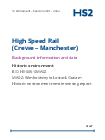LAHORE: The Air Quality Index rating was 188 at Town Hall Lahore within the last 24 hour, according to the Punjab Environment Protection Department.
Lahores Kot Lakhpat Industrial Area had an air quality index (AQI), reading of 261, which was measured using a mobile van.
According to the environment protection division, the AQI readings at the National Hockey Stadium were 179 and 208 at Township Sector 2, respectively.
According to Punjab Environment Protection Department data, the air quality readings were 120 at Rawalpindi, 90 for Bahawalpur, and 80 for Faisalabad.
The AQI is calculated based on five types of pollution: particulate matter, ground-level ozone and carbon monoxide.
AQIs above 150 are considered unhealthy. AQIs between 201 and 300 are more dangerous. AQIs over 300 are considered extremely toxic.
Experts claim that winter saw an increase in air pollution. Air pollution is increased by changes in wind speed, wind direction, and sliding minimum temperature.
The winter air is heavier than the summer, which causes poisonous particles to move down and pollutes the atmosphere. An area is covered by a layer of polluted dust, including large amounts carbon and smoke.
Experts said that the smoke from burning crop residues, factories, and burning oil, coal, garbage, or tyres enters into the atmosphere. The effects last until the end of the season.

